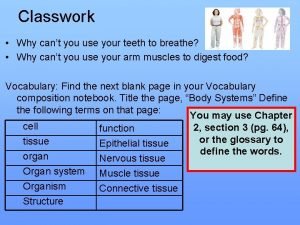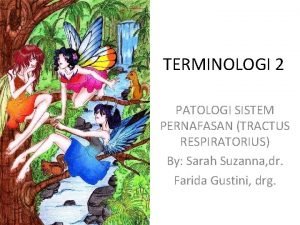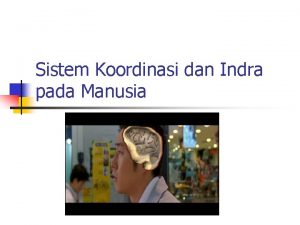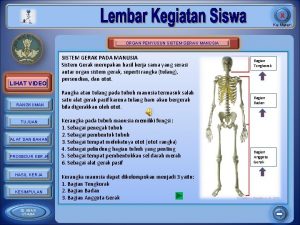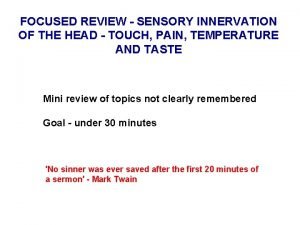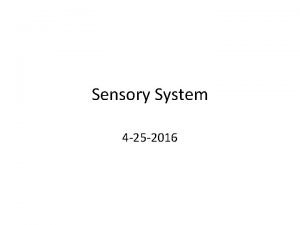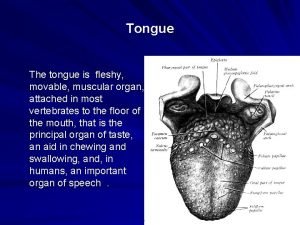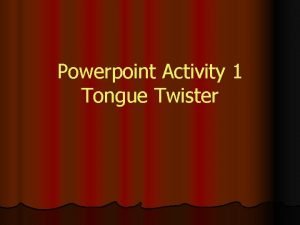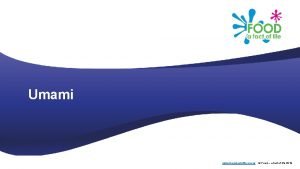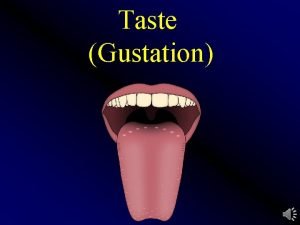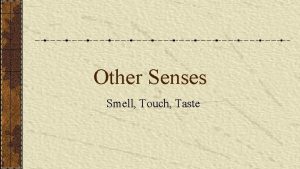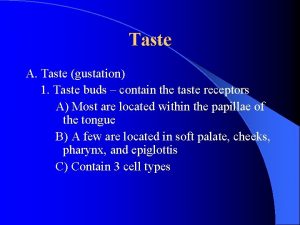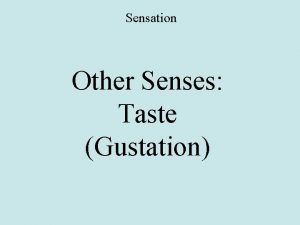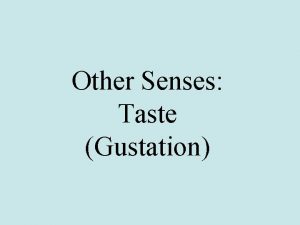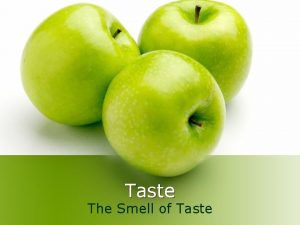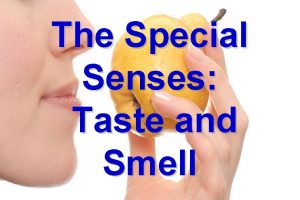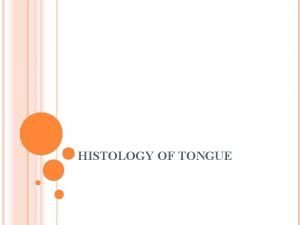The Tongue taste The tongue is the organ










- Slides: 10

The Tongue (taste) • The tongue is the organ that has receptors to capture flavour molecules • The tongue is a muscle that is covered with a layer of epithelial cells (moist) that form rough bumps called papillae • There are different kinds of papillae: foliate and fungiform papillae(contain tastebuds) andfiliform papillae (no taste buds)

Types of taste buds


Flavour detection • The tongue can only detect flavourful molecules of the following 4 basic flavours: • Bitter • Sour • Salty • Sweet

To taste something… • • Must be flavorful (sapid) (have taste) Must be able to dissolve in saliva (solution) Must be in sufficient concentration to stimulate receptor cells Must come into contact with taste buds (receptor cells)

How we taste • • Chemicals in food dissolve in saliva The cells of the taste buds gets stimulated A nerve signal begins The nerve impulse goes to the brain

Non tasting function of the tongue • The tongue is used to move food around for chewing • It is composed of muscle fibers that are oriented in different directions making it very versatile (flexible)

The tongue a complex muscle Transverse muscle fibers Longitudinal muscle fibers Vertical muscle fibers

How smell and taste work together

Summary Stimulus (odorous or flavourful molecule, light, pressure, heat, sound wave, etc. . ) Receiver (nose, tongue, eye, skin, ear) Processor (olfactory membrane, taste buds, rods/cones, corpuscules, tiny hairs in ear) Conductor (Nerve) Analyser (brain)
